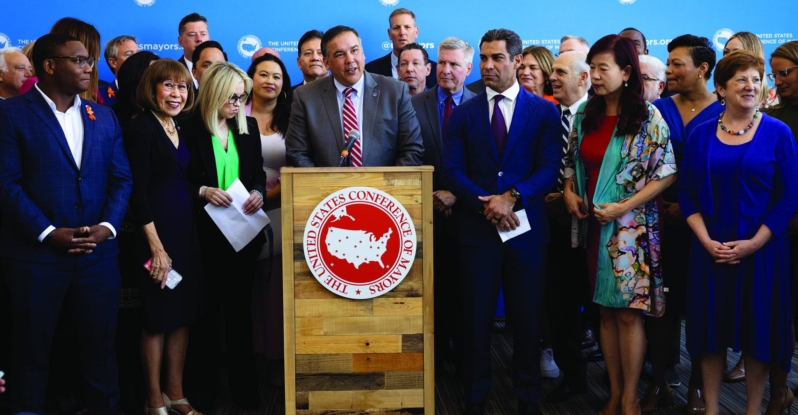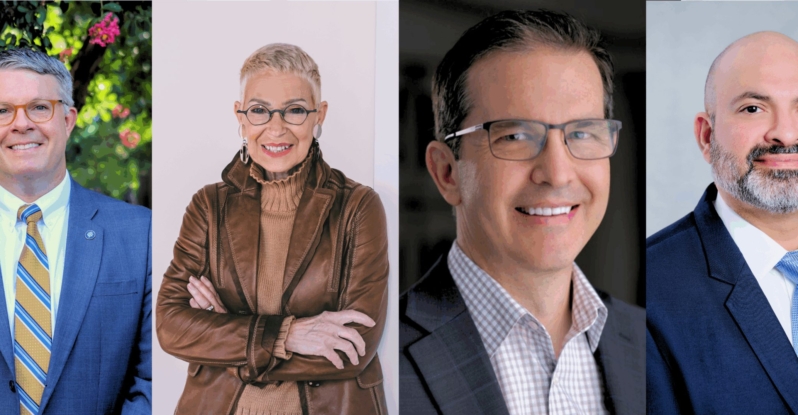
By Ryan Mottau
Director of Digital Engagement at MIG
Portland, Oregon
As a park and recreation planner with an eye for new technology, I’ve made a two-decade long career of looking into the future. I serve as Director of Digital Engagement at MIG, a planning, design, communications, and technology consulting firm. We were hired by City Parks Alliance to support the Parks and Technology Initiative, examining the opportunities and challenges technology offers to enhance the public realm and support the role of parks as critical civic infrastructure.
The questions I ask while planning the future of a park or system are:
- What are the most used areas in this park or system? Who uses them?
- Which parks or spaces aren’t being used? What do we know about these underperformers?
- How did that improvement, or new program, change park use?
- How can we provide evidence of the many benefits we are providing in the system?
For park staff, these are ongoing questions, constantly evolving, and in some cases they can only offer anecdotes, memories, or perhaps a spreadsheet used to track past improvements. Over the past few years, the challenging task of answering these questions (and others) have been taken up by both public land advocacy groups and by technology firms. Now we have a bewildering array of options to explore, from cell phone location data to LiDAR scanning drones.
I attended Greater & Greener for the fourth time in 2024 to synthesize takeaways from conference sessions focused on data and technology so the Alliance can educate parks leaders about what they need to consider—and understand—about technological tools. These included:
- a keynote address on How Tech and Data Can Help with More Equitable Use and Management of Parks and Public Spaces by Jackie Lu, President & Co-Founder of Helpful Places in Toronto,
- panels on Revitalizing Public Spaces Through the Power of Technology and Parks, Big Data: Fostering Public Trust in Digital Systems, and Using Technology & Data to Enhance Accessibility, and
- several workshops and peer conversations on topics ranging from Using Data to Create Equitable Park Investment Strategies to Equitable Access to Recreation Programs and Facilities and Using Tech, Media, and Art for Youth Programming and Engagement.
We have learned much over the past few years about technology in parks, everything from big data, to sensors, to communicating about these technologies to our local communities. But the five points below are the big takeaways for me, which the Alliance also wants to share with its network of parks practitioners. As a caveat, these are not meant to be exhaustive but are a summary of themes that emerged across Greater & Greener.
#1: Public spaces are complex and should serve everyone
An important place to start this conversation is with our understanding of the importance of parks and public spaces. There are many different ways to say it but I boil it down to this: Parks are for everyone. While this statement oversimplifies the complexity of providing these spaces, I appreciate that it emphasizes people and inclusion. As park professionals, we grapple with how changes in our public spaces align or challenge our vision for providing access and a welcoming environment for everyone. The expansion of park-focused technology adds another layer of complexity to examine in light of our existing mission, goals, and policies.
Those who have been around digital marketing recognize that many technologies are already being used, and have been for years, to track customer behavior, analyze market areas, and more. In her Greater & Greener 2024 keynote address, Jackie Lu noted that some of the technologies aren’t chosen by us as park managers, but travel into our public spaces through users’ pockets (cell phones) or through sidewalks and pathways (shared bikes/scooters or delivery robots). In some ways that should pave the way for using technologies such as location data to further our parks and recreation goals.
However, I’m left asking–does the fact that the private sector is using data collection mean it is ok? Or are we (or should we be) held to a higher standard as the stewards of public spaces? Our exploration and response to these changes should be rooted in our values.
#2: Small organizations can tackle big technology projects
Greater & Greener is an excellent place to learn about what the innovators across the country and around the world are up to. We regularly hear about what’s happening in the big cities, like New York and Miami, but what about the vast majority of park agencies that serve much smaller places with far fewer staff?
A story from the conference that stood out for its universal relevance is Lynnwood, Washington’s ParksLove Project. This small, diverse community on the outskirts of Seattle engaged the community in collecting on-the-ground experiences, purchased and analyzed cell phone location data, and assembled an equity-focused long-range investment plan with minimal staff, grant support, and a partnership with the University of Washington. Sarah Olson, who led the ParksLove project in her past role as Deputy Director of Lynnwood Parks, Recreation, and Cultural Arts, emphasized the importance and power of Geographic Information Systems (GIS), a computer system that analyzes and displays geographically referenced information. She also notes that many park agencies don’t have the necessary skills or support to maintain GIS data, acquire other layers of information, or make use of it all through export or analysis.
The good news is that there are some amazing tools, such as ParkServe, created by the Trust for Public Land, that assemble the information and guide you through analyzing new possibilities.
#3: Focus on the problem
One of the most consistent messages I heard at Greater & Greener was to focus on the problem you are trying to solve before you get to the solution. Sometimes these problems are obvious, created by limited resources or the need to gather new information. In all cases, a clear problem statement will help describe why you are looking at a particular solution and avoid collecting too much information or trying to accomplish too much.
For example, the City and County of Denver, which has a stated goal of investing 70% of capital funding in its highest-need areas, shared how they used a multi-layered GIS analysis that resulted in an equity index specific to parks and recreation. They used this index as the basis for other decisions about tracking users and analyzing the impact of improvements.
#4: Find advice, expertise, and partners
At the conference, I was excited to hear about the range of experts involved in these explorations of technology. University partners stood out as critical for making sense of large data sets (although there are also consultants happy to help with this) and designing experiments. University partners spend a great deal of time considering the implications of their work and are often subject to high research standards. Institutional/Independent Review Boards (IRBs) guide research ethics and may be asking some of the same questions. The setup for university research can inform your ongoing data collection, including limits on when identifiable information is collected and how information is stored.
Expanding the idea of who is an expert, the City of Long Beach is working directly with the community to generate their initial problem statements and develop solutions. The experience and unique understandings these community members bring can broach new topics that we might not get to on our own. Consider asking anyone who might be impacted, especially if they have a different experience or abilities than you do.
#5: Trust is critical
Some of the technology being implemented is completely invisible to a park user. This creates a very real potential for misunderstanding when people become aware of these basic tracking or counting efforts. As public servants and stewards of these places, it is our job to maintain the trust of the people who use and rely on them.
Many participants at Greater & Greener expressed some concern about tracking via cell phones or computer vision. Some presenters shared that once they had the opportunity to explain what – and critically – why these technologies are being used and what is being done to protect privacy, most stakeholders were satisfied. Figuring out how to communicate that to anyone who walks into a park is a challenge that should be addressed through clear and consistent visual language.
For example, Digital Trust for Places and Routines (DTPR) provides an open-source path to indicating the technology in use and providing a channel for more information. I certainly appreciate this as a kind of digital wayfinding to help us navigate the complexity of communications around technology.
Conclusion
Sometimes the hardest question to answer when it comes to technology in parks is “where do I begin?” You may have a salesperson suggesting an amazing new solution, or are exploring a problem, or need to respond to a change in staffing, resources, or attention on a topic.
Using my synthesis of their program, City Parks Alliance has published a policy brief on parks and technology [LINK] to help educate parks leaders about what they need to consider—and understand—about technological tools for parks and public spaces. This publication shares more of the exciting things happening around the country and provides guidance based on what we learned about questions and processes for introducing a new technology.
To learn more about parks and technology, see previous Alliance programming on this topic, and additional resources, visit cityparksalliance.org/parks-and-technology.
Support for this initiative is provided by The John S. and James L. Knight Foundation.




